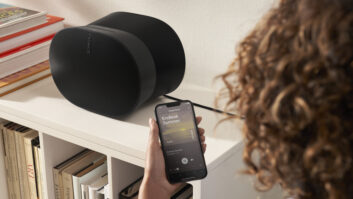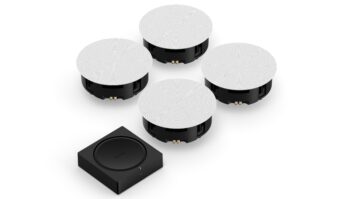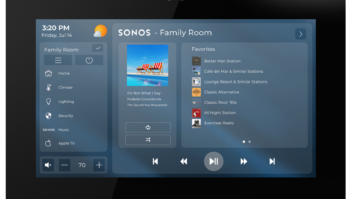One of the first things that I am often asked on walk-throughs with potential new clients is whether or not I will install a streaming music system or “something like Sonos” in their home. They (and I) want it to be dead simple, integrate with the rest of the system, and give them a lot of musical options. My initial response to integrating Sonos is almost always “no,” but lately some of my techs and Home Theater Rebuild partners have been trying to persuade me otherwise. So I wanted to take some time to tell you have I’ve heard, what I’ve learned, and where I currently stand.
First we’ll start with my perspective, then we’ll move on to what my colleagues have been saying. While Sonos has created a great product that works in many situations, particularly retrofits, it does have its drawbacks.
1.Since its API is closed off, Sonos cannot be easily or smoothly integrated into a control system. I do understand there are some Extra Vegetables drivers for Control4 and a couple of other systems, but I have heard mixed reviews about reliability and ease of use.
2.On large, custom projects, I want my clients to have a ‘Wow’ factor and I don’t want their friends, family, and colleagues to say “you paid HOW much? I could have set up Sonos for you at a fraction of that.” While our costs for the audio are in line with off-the-shelf solutions, as you all know, there are many other aspects and components to the system that the average customer doesn’t think about and therefore becomes part of the, “I could have done it for less” math.
3.Sonos relies on the client’s network to function, and if the network goes down Sonos is dead in the water. With a hardwired system, at least the client can use a wall keypad and still access songs stored in a local device–iPod dock, tuner, CD player, etc.
4.Sonos has been having issues lately with locking customers out of the system and requiring software updates, necessitating a service call.
5.Sonos does not store any content locally, so the client’s main computer has to be on, or a NAS drive has to be installed. Most integrated systems have a hard drive that syncs up with the client’s iTunes library.
6.Margins are extraordinarily slim.

Now, here are the reasons my Home Theater Rebuild colleagues give me for carrying Sonos
1.It’s easy to install. It takes literally just a few minutes to plug in a Sonos device and add it to the system.
2.Mesh Network. Adding more devices makes the network stronger and allows you to increase range without having to run additional wires.
3.Expandability. Because you don’t need to homerun wires, additional devices can easily be added at a later date. This allows clients to scale back projects today to meet budgetary needs, but still have options in the future
4.It Just Works. While this runs counterpoint to #4 above, it seems that the issue I have seen once or twice are actually quite rare. Time will tell.
5.No need to overcome the, “Well Sonos can do that, why can’t your system?”
6.I plan to visit the Sonos booth at CEDIA next month to have a serious discussion with them about my objections and see if they can persuade me. It will be a tough sell; let’s see how if they can pull it off!
For my business, I prefer to use NuVo, Crestron or another high-end distributed audio solutions. Are many of you using Sonos and having success? If so, how do you overcome the objections I have raised? For those of you not using Sonos, what do you have to say to my techs and Home Theater Rebuild partners?

+Todd Anthony Pumais president of The Source Home Theater Installation in New York City.







